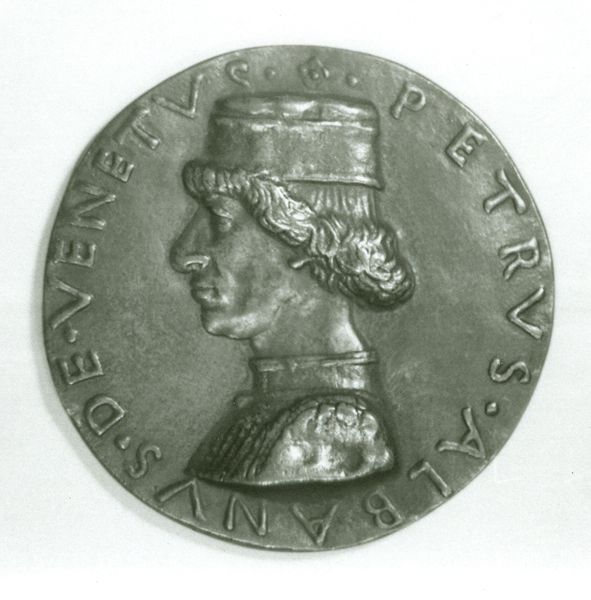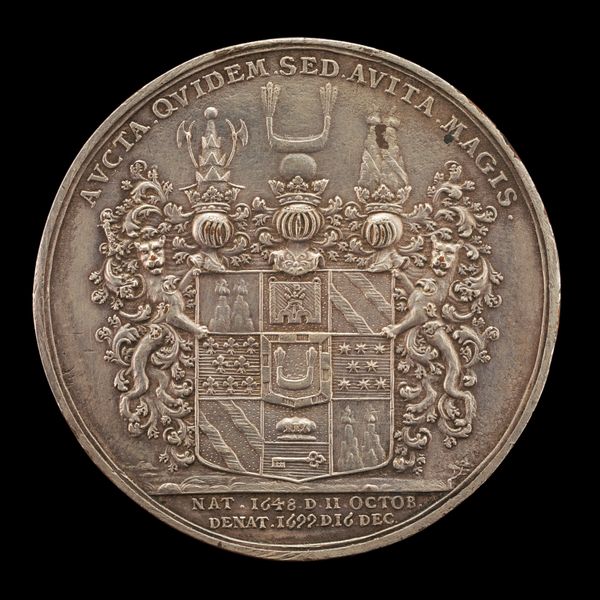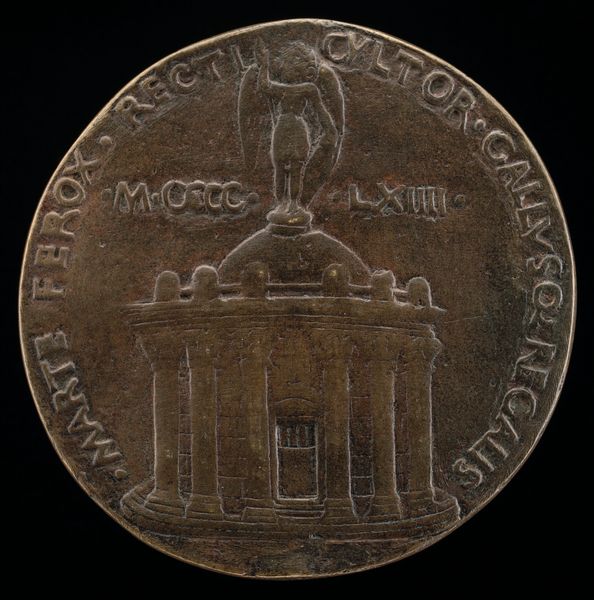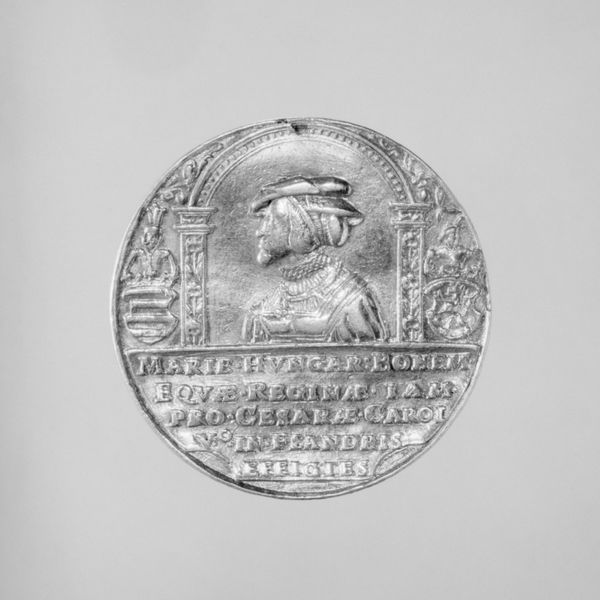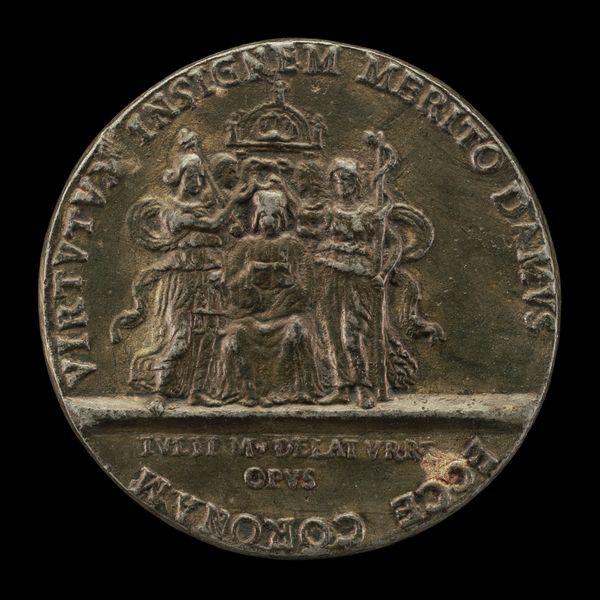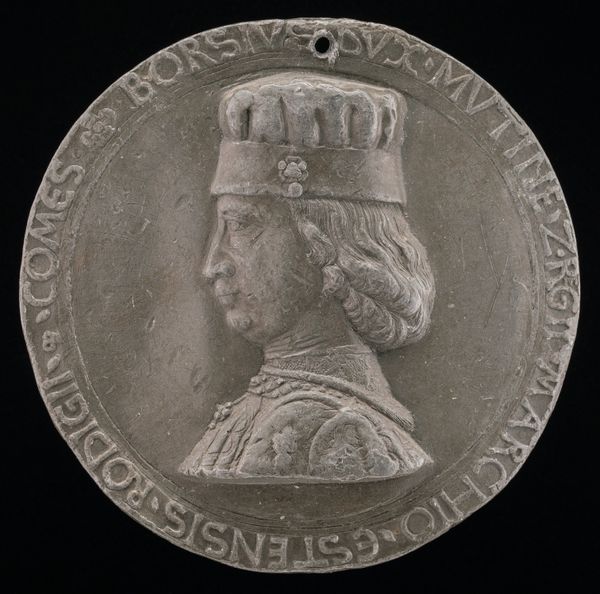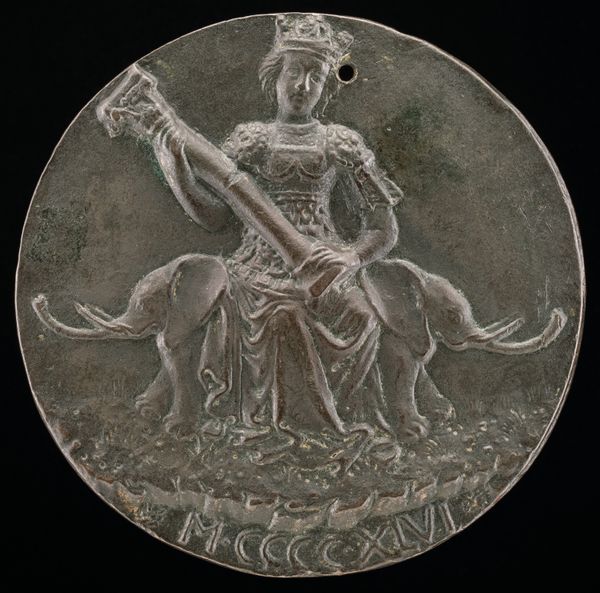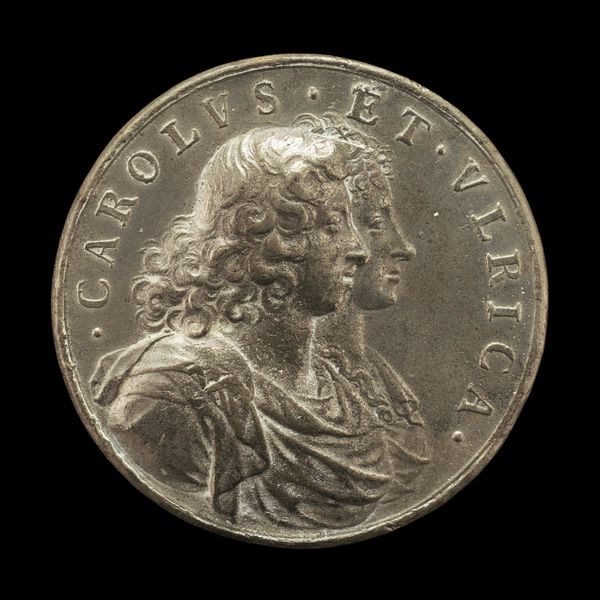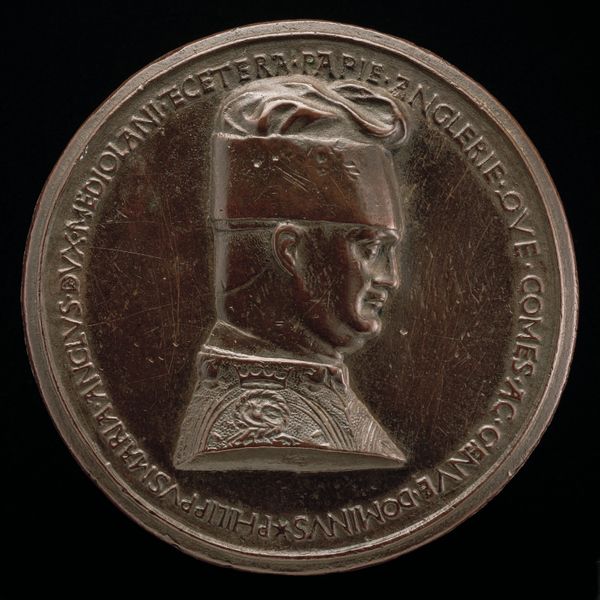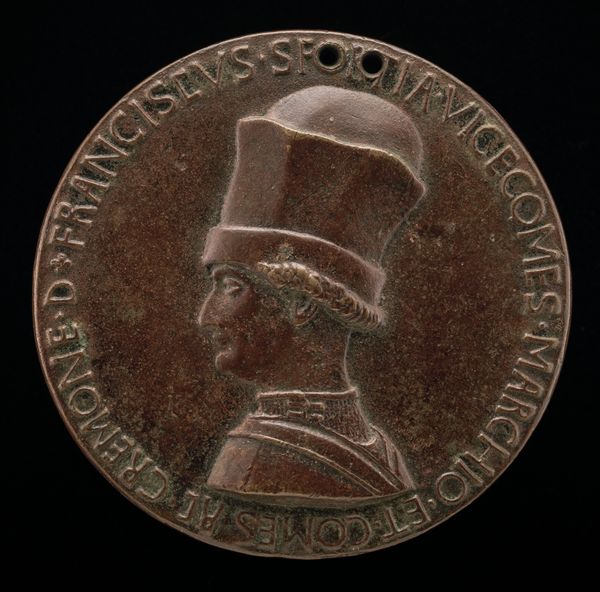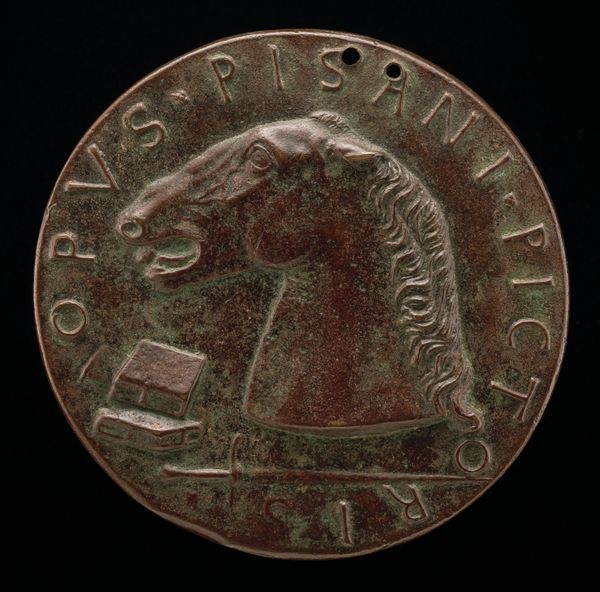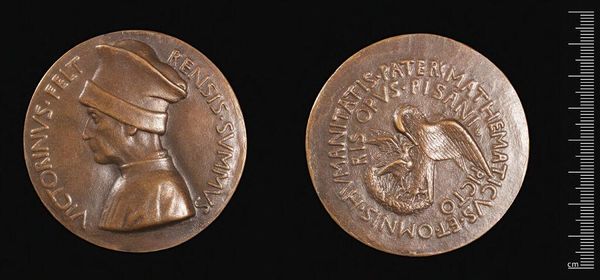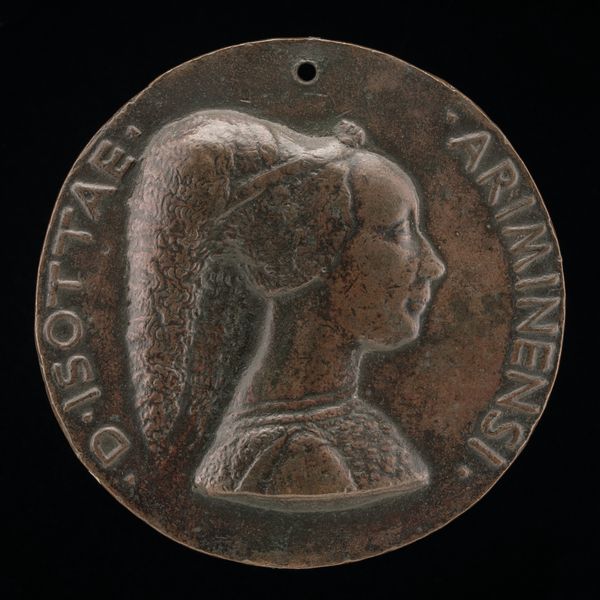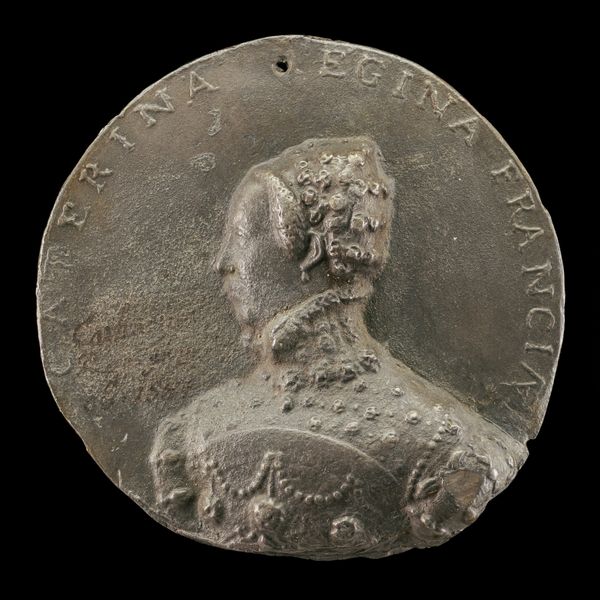![Gianfrancesco I Gonzaga, 1395-1444, 1st Marquess of Mantua 1433 [obverse] by Pisanello](/_next/image?url=https%3A%2F%2Fd2w8kbdekdi1gv.cloudfront.net%2FeyJidWNrZXQiOiAiYXJ0ZXJhLWltYWdlcy1idWNrZXQiLCAia2V5IjogImFydHdvcmtzLzc2Nzk4M2E1LTFjYmEtNGViMC05N2UyLWNlYzE2OWFlOGE5NC83Njc5ODNhNS0xY2JhLTRlYjAtOTdlMi1jZWMxNjlhZThhOTRfZnVsbC5qcGciLCAiZWRpdHMiOiB7InJlc2l6ZSI6IHsid2lkdGgiOiAxOTIwLCAiaGVpZ2h0IjogMTkyMCwgImZpdCI6ICJpbnNpZGUifX19&w=3840&q=75)
Gianfrancesco I Gonzaga, 1395-1444, 1st Marquess of Mantua 1433 [obverse] c. 1445 - 1447
0:00
0:00
sculpture
#
medal
#
stone
#
sculpture
#
sculptural image
#
unrealistic statue
#
carved into stone
#
sculpting
#
sculpture
#
carved
#
historical font
#
columned text
#
statue
Dimensions: overall (diameter): 9.99 cm (3 15/16 in.) gross weight: 387.18 gr (0.854 lb.) axis: 1:00
Copyright: National Gallery of Art: CC0 1.0
Curator: Looking at this, I immediately sense a blend of solemnity and authority. It's hard to ignore that high relief profile. Editor: This is Pisanello's medal depicting Gianfrancesco I Gonzaga, the first Marquess of Mantua. It was created sometime between 1445 and 1447. These portrait medals, gaining popularity at the time, functioned almost as portable monuments to power. Curator: Absolutely, a miniature icon of leadership! What's striking is the conscious shaping of his image. That distinctive hat, for example, tells me a lot about status and perhaps also signals membership in a specific order or allegiance. And the Latin inscription further contributes to that air of established authority. Editor: Exactly. These inscriptions weren't mere labels; they were carefully constructed texts designed to amplify the subject's virtues and titles. Here, Pisanello is engaging in early forms of what we might now call 'brand building' through imagery, solidifying the Gonzaga's image across political and cultural spheres. It makes you wonder about its reach at the time, though. Curator: Its symbolic function would certainly transcend mere identification. Even without knowing Latin, one can interpret a feeling of learnedness and tradition which translates into the family's lasting influence. It feels less about representing likeness and more about creating the impression of permanence and importance. Editor: Well, such artworks reinforced not just individual but familial power; each crafted portrait became a token circulating the power and influence through marriage alliances, diplomatic gifts, and public display. One could very easily imagine one of these circulating through royal families! It is also worth reflecting on Pisanello's intentions too; as artists became cultural celebrities, how much did crafting such items help boost reputation through a visual culture? Curator: The image resonates with deep seated, often unconscious desires for stability and order, connecting him to ancestral strength. We have to wonder how its psychological impact has influenced our readings of such leaders through art today! Editor: True! These historical imprints continue to shape modern concepts and representations of leadership. A potent visual testament to how imagery constructs power. Curator: Precisely, by carefully combining art and meaning, Pisanello solidified Gonzaga's legacy. Editor: And his own as well. He created objects which echoed into eternity!
Comments
No comments
Be the first to comment and join the conversation on the ultimate creative platform.
